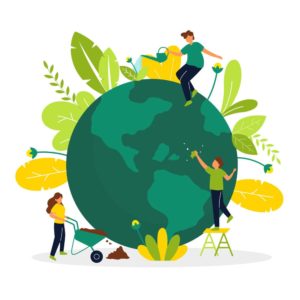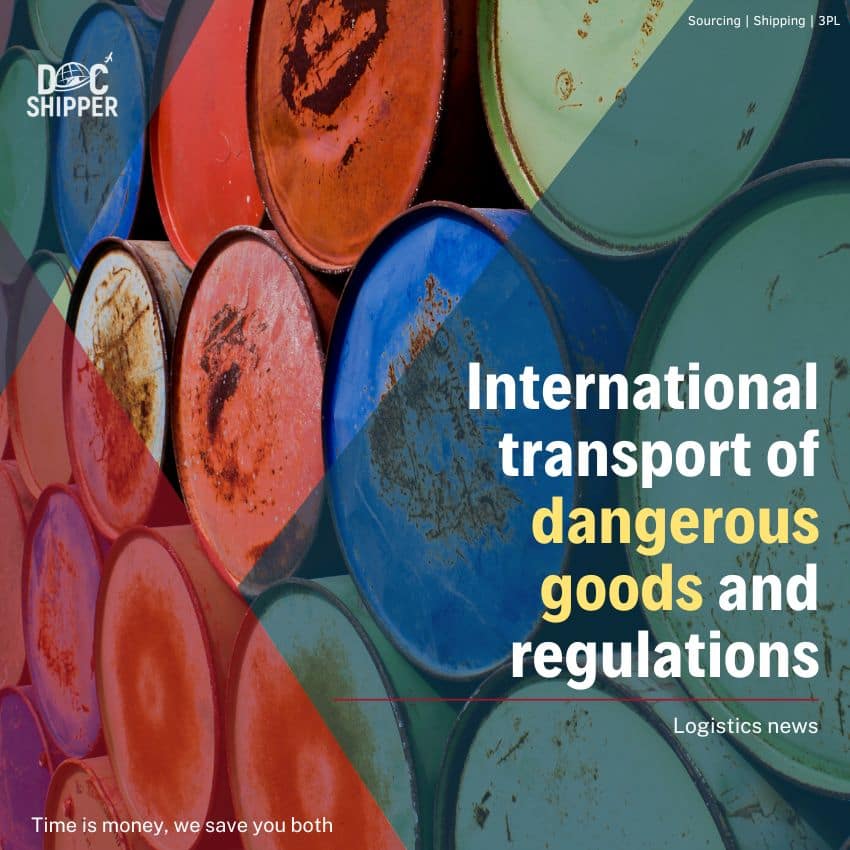What is a dangerous good?
A good in its definition represents a danger when it is seen as a hazard for the man or the environment.
He can be in different forms such as an object or a material for example. All goods representing a risk for transport are named.
Concerning the international transport of dangerous goods, regulations are revised every year one (IATA) or two years.
National amendments are used to achieve these international regulations.

TDG: regulations applicable to each mode of transport
The transport of dangerous goods (TDG) can be carried out by sea, air, road, or rail, It can be carried out by international modal regulations and by multilateral agreements that allow several countries to carry out certain transport of dangerous goods not provided for by the regulations.
- International transport of dangerous goods by rail is governed by the RID (Regulations Concerning the International Carriage of Dangerous Goods by Rail).
- International air transport is subject to IATA regulations and ICAO regulations on the transport of dangerous goods.
- River transport is governed by the ADN agreement (European Agreement concerning the International Carriage of Dangerous Goods by Inland Waterways)
- Road transport is subject to the ADR (European Agreement concerning the International Carriage of Dangerous Goods by Road.
- The rules for international maritime transport are set by the International Maritime Organization.
For the transport of dangerous goods by sea, the International Maritime Dangerous Goods Code (IMDG) must be referred to.
Objectives of TDG regulations
TDG regulations serve to protect people, property, and the environment from potential hazards.
The regulation sets out which dangerous goods are prohibited and which are allowed, which goods pose a high risk, and the requirements for everyone involved in organizing a TDG event. Local regulation is based on the recommendations of the Organization’s UN.
A system was developed by The United Nations about risk communication tools and hazard classification criteria. They have also established a model regulation that forms the basis for all international regulations.

Ever-changing regulations
The regulations are evolving every 2 years, except for IATA which evolves every year.
During 2021, the 5 regulations have been modified about the transport of dangerous goods.
International classification for the transport of dangerous goods
Each dangerous good has one or more types of danger and has an “Organization’s UN number”.
Dangerous goods are divided into 9 classes:
-Class 1:
We have various explosive substances and articles who:
- Presenting a mass explosion hazard (dynamite)
- Presenting a projection risk (a shell)
- Presenting a fire hazard (fireworks)
- Presenting no significant risk outside the packaging (firearm cartridges)
- Presenting a mass explosion risk and are very insensitive (mine blasting explosives)
- Presenting an extremely insensitivity without mass explosion risk (extremely insensitive explosives)
-Class 2:
Gases substances and articles:
- Flammable gases.
- Non-flammable and no toxic gases.
- Toxic gases.
(Butane, propane…)
-Class 3:
Flammable liquids: liquids with a flash point of 60°C or less.
Examples: perfumery products, gasoline…
-Class 4:
Here we have material:
- Easily flammable and ignite by friction (celluloid)
- Subject to spontaneous combustion (activated carbon)
- Water-reactive (sodium)
-Class 5:
1. Oxidizing materials who can cause/contribute to the combustion of a material (chlorate)
2. Organic peroxides who can ignite readily and undergo exothermic decomposition (peroxide)
-Class 6:
Materials who are:
1. Toxic who can damage health or cause death (arsenic)
2. Infectious who can cause infectious diseases in humans (bacteria)
-Class 7:
Materials who are radioactive:
They are defined by the Packaging and Transport of Nuclear Substances Regulations.
These are a potential danger of contamination, and we can find 3 categories:
1: no/low radiation outside the package.
2 and 3: materials who have radiation outside the package.
-Class 8:
We find here corrosive materials.
These can destroy human tissue and damage the transport (equipment, goods).
For example nitric acid.
-Class 9:
They are various hazardous materials, article and products.
These are materials that have none of the chances of other classes, or objects that include materials from several classes. (lithium batteries)
Our expert advice:
Firstly, it is important to know that for each request for quotation concerning the transport of dangerous goods, a safety data sheet (SDS) will be requested.
Secondly, when you send your dangerous goods by sea, we study the compatibility of the goods between them.
Visual identification: packaging, hazard labels and marking
Labeling
It is mandatory to adapt the labeling to the goods.
All truck carrying dangerous goods must be identifiable by labels on the vehicle or by orange signs that vary according to the risks, the quantity transported or the mode of transport.
In addition to the hazard labeling on the goods
- The Agreement concerning the International Carriage of Dangerous Goods by Road requires the inclusion of the UN code.
- The International Air Transport Association Dangerous Goods Code requires the inclusion of the UN code with the proper shipping name.
- The International Maritime Dangerous Goods Code Code requires the insertion of the UN code.
Dangerous goods packaging
The packaging protects the goods during handling, transport and storage. The packaging of dangerous goods must be agreed in accordance with the regulatory requirements.
Contribute with your content to inspire thousands of logistics readers through our blog. Publishing posts is a daily mission for us
Dangerous goods transport documents
All transports of dangerous goods must be accompanied by a transport document called dangerous goods declaration.
Aerial Focus:
Shipments of dangerous goods on domestic and international flights that necessitate a dangerous goods shipper’s declaration, as defined by the International Air Transport Association, the regulations must be registered with the airlines.
Our expert tip:
- The consignor should provide the 24-hour telephone number of a person who is familiar with the hazards and characteristics of all dangerous goods being shipped.
- The phone number, country code and area code must appear on the Shipper’s Declaration of Dangerous Goods in the “Handling Information” box.
FAQ | International transport of dangerous goods and regulations
Read more
Looking for more? These articles might interest you:
DocShipper info: Do you like our article today? For your business interest, you may like the following useful articles :
Need Help with Logistics or Sourcing ?
First, we secure the right products from the right suppliers at the right price by managing the sourcing process from start to finish. Then, we simplify your shipping experience - from pickup to final delivery - ensuring any product, anywhere, is delivered at highly competitive prices.

Fill the Form
Prefer email? Send us your inquiry, and we’ll get back to you as soon as possible.
Contact Us








